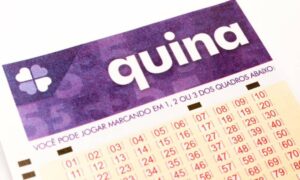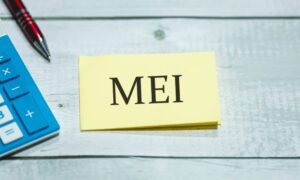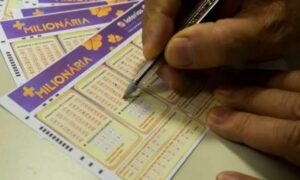The global phenomenon of Wordle continues to thrive, engaging millions daily in the challenge of guessing a five-letter word within six attempts. On April 22, 2025, puzzle number 1,403 introduced the word “artsy,” an adjective describing someone or something with artistic pretensions. Rated as very easy with an average of 3.8 guesses, the puzzle sparked lively discussions among its worldwide community. Illustrated by Chinese artist Joanne Joo, the puzzle blended creativity with intellectual challenge. This article delves into the details of Wordle 1,403, exploring solving strategies, the game’s cultural impact, and the vibrant community driving its success.
Players across time zones tackled Wordle 1,403 at midnight on April 22, eager to extend their winning streaks. The word “artsy” proved accessible, requiring fewer than four guesses on average, appealing to both beginners and seasoned players. Social media platforms buzzed with shared experiences, from quick solves to in-depth analyses of the puzzle’s nuances. Joanne Joo’s evocative illustration added a visual flair, reflecting her signature style rooted in everyday observations.
Wordle’s appeal lies in its blend of simplicity and mental rigor, attracting players of all ages. The choice of “artsy” for puzzle 1,403 underscores the game’s knack for selecting words that are both familiar and thought-provoking. This piece examines the puzzle’s reception, effective solving techniques, and the community’s role in sustaining Wordle’s global popularity.
Why Wordle 1,403 stands out
The word “artsy,” featured in Wordle 1,403, is defined by Webster’s New World College Dictionary as “having or showing artistic pretensions.” Familiar to English speakers, its inclusion intrigued players due to its cultural connotations. With common letters (A, R, T, S, Y), the word was straightforward to guess, especially for those using strategic starter words like “arise” or “stare.” The 3.8-guess average highlights its accessibility while emphasizing the value of a methodical approach.
Despite its ease, the puzzle didn’t dampen player enthusiasm. Social media posts showcased solve grids, with some players cracking it in just two guesses. A Dubai-based player, for instance, likened their two-guess solve to an “eagle” in golf, celebrating with flair. The global community, spanning cities like New York, London, and Tokyo, used hashtags like #wordlereview to exchange tips and revel in their successes, turning a solitary game into a shared experience.
- Tips for solving Wordle 1,403:
- Start with vowel-heavy words like “audio” or “ouija” to pinpoint letters like A and Y.
- Include common consonants like T and S in early guesses.
- Consider words ending in “y,” as adjectives like “artsy” are common in Wordle.
- Use feedback from yellow and green tiles to narrow options swiftly.
The artistry behind the puzzle
Joanne Joo, the featured illustrator for Wordle 1,403, brought a unique touch to the puzzle. A Chinese artist based in Bangkok, Joo’s self-taught style captures the subtleties of daily life. Her illustration for the puzzle complemented the word “artsy,” adding a visual layer that enriched the player experience. The New York Times’ decision to feature artists like Joo reflects its commitment to blending creativity with gameplay.
Joo’s work, described as subtle and observational, resonated with players, who noted its alignment with the word’s artistic theme. Social media discussions praised the soft colors and introspective forms in her illustration, which seemed to echo the puzzle’s creative spirit. This fusion of visual art and wordplay underscores Wordle’s evolution into a multifaceted cultural experience, appealing to players’ aesthetic and intellectual senses.
The curation of words like “artsy” highlights the New York Times’ editorial care. Since acquiring Wordle in 2022, the newspaper has balanced accessibility with challenge, selecting terms that spark conversation. The word “artsy” prompted debates about the meaning of “artistic pretensions” across cultures, showcasing Wordle’s ability to inspire dialogue beyond the game itself.
Strategies to master Wordle
Solving Wordle efficiently requires more than a strong vocabulary. Experienced players rely on strategies to maximize their chances of success. For Wordle 1,403, “artsy” was quickly solved by those using systematic approaches. The 3.8-guess average indicates players identified key letters early, leveraging the game’s feedback to refine their choices.
A popular tactic is starting with a word combining vowels and common consonants. Words like “crane,” “slate,” or “arise” are favored for covering frequent letters and eliminating possibilities. In puzzle 1,403, players choosing “arise” as their opener gained valuable feedback, with A, R, and S marked as correct or present. From there, guessing “artsy” was a logical step, especially given the common “y” ending in adjectives.
Another effective strategy involves using the second guess to test new letters, even if it means picking an unlikely word. A second guess like “stony” could confirm S and Y while ruling out O and N. These techniques, shared across forums and social media, illustrate the collaborative spirit of the Wordle community. Tools like Wordle Bot, which analyzes player performance, have also gained traction, offering tailored insights for improvement.

- Proven Wordle strategies:
- Choose a starter word with at least two vowels and common consonants.
- Use the second guess to explore new letters rather than aiming for the final word.
- Pay attention to yellow tiles to reposition letters correctly.
- Keep a mental list of common five-letter words, especially adjectives and verbs.
The global Wordle community
Wordle’s strength lies in its community, with millions of players—from novices to experts—engaging daily. On April 22, the #wordlereview hashtag trended, with thousands sharing their solve grids and stories. The word “artsy” elicited varied reactions, from praise for its simplicity to discussions about its cultural relevance.
Players from cities like Dubai, Sydney, and São Paulo shared their experiences, highlighting the game’s universal appeal. A Dubai player posted a two-guess solve, starting with “arise” and landing on “artsy,” sparking envy and admiration. The community’s creativity shines through in memes, poems, and fan art inspired by daily words, transforming Wordle into a cultural hub.
The New York Times amplifies this engagement through its Instagram account dedicated to games, sharing tips and behind-the-scenes content. Forums like the Spelling Bee community and guides for other games show Wordle’s place within a broader ecosystem of intellectual pastimes. The community’s vibrancy ensures Wordle remains a shared experience, connecting players worldwide.
Wordle’s cultural impact
Since its creation in 2021 by Josh Wardle, Wordle has evolved from a personal project into a global sensation. The New York Times’ 2022 acquisition expanded its reach, introducing diverse words and visual elements like Joanne Joo’s illustrations. The word “artsy” in puzzle 1,403 reflects this evolution, blending accessibility with cultural depth.
The game has reshaped how people engage with language. Players report exploring new words, consulting dictionaries, and even learning English through Wordle. Adjectives like “artsy” prompt reflection on meanings and contexts, particularly in cultures where “artistic pretensions” carry varied interpretations. In non-English-speaking countries like Brazil, Wordle serves as a learning tool, boosting vocabulary.
Wordle has also inspired variants in other languages, such as Termo (Portuguese) and Parole (Italian), proving its universal appeal. Its economic impact is notable, with the New York Times reporting increased digital subscriptions since acquiring the game. The success of puzzle 1,403, with its accessible word and striking illustration, exemplifies Wordle’s enduring charm.
How Wordle stays relevant
Wordle’s longevity stems from its simplicity and adaptability. With over 1,400 puzzles released, the game keeps players hooked with daily challenges that balance familiarity and surprise. The word “artsy” in puzzle 1,403, though easy, sparked discussions about art and language, showing how a single word can resonate deeply.
The New York Times has enhanced the player experience with features like Wordle Bot, which analyzes guesses, and email reminders to maintain streaks. Including artists like Joanne Joo adds an aesthetic dimension, setting Wordle apart from other word games. The community’s active presence on platforms like X, through hashtags like #wordlereview, ensures the game remains a cultural touchstone.
- Factors keeping Wordle relevant:
- Simple format appealing to all ages.
- Daily updates for fresh, unpredictable challenges.
- Visual elements like artist illustrations.
- Engaged community sharing tips and stories.
Wordle timeline in 2025
The year 2025 has been pivotal for Wordle, attracting new players while retaining its core audience. The word “artsy” in puzzle 1,403 reflects the game’s balance of ease and engagement. Below is a timeline of Wordle’s 2025 highlights up to April:
- January: Wordle surpasses 1,300 puzzles, with words like “vivid” and “gleam” fueling social media buzz.
- February: An app update improves the interface, enhancing access to tools like Wordle Bot.
- March: New illustrations, including works by Asian artists, emphasize visual diversity.
- April: Puzzle 1,403, featuring “artsy,” is rated very easy but drives significant engagement.
This timeline underscores Wordle’s evolution, staying true to its roots while embracing innovations.
Wordle’s future
As Wordle progresses in 2025, its ability to innovate will be key. Words like “artsy” suggest continued exploration of thought-provoking terms. Featuring artists like Joanne Joo signals a commitment to cultural diversity, potentially drawing players from new regions.
Technology will shape Wordle’s future, with tools like Wordle Bot and email reminders enhancing engagement. Speculation about collaborative modes or themed puzzles persists, though no official plans have been announced. The community’s passion, evident in #wordlereview and forums, ensures Wordle’s place as a global phenomenon.
- Trends for Wordle’s future:
- Greater use of global artist illustrations.
- Expanded analytical tools for casual players.
- Growth of local communities and events.
- Potential themed or seasonal puzzles.

The global phenomenon of Wordle continues to thrive, engaging millions daily in the challenge of guessing a five-letter word within six attempts. On April 22, 2025, puzzle number 1,403 introduced the word “artsy,” an adjective describing someone or something with artistic pretensions. Rated as very easy with an average of 3.8 guesses, the puzzle sparked lively discussions among its worldwide community. Illustrated by Chinese artist Joanne Joo, the puzzle blended creativity with intellectual challenge. This article delves into the details of Wordle 1,403, exploring solving strategies, the game’s cultural impact, and the vibrant community driving its success.
Players across time zones tackled Wordle 1,403 at midnight on April 22, eager to extend their winning streaks. The word “artsy” proved accessible, requiring fewer than four guesses on average, appealing to both beginners and seasoned players. Social media platforms buzzed with shared experiences, from quick solves to in-depth analyses of the puzzle’s nuances. Joanne Joo’s evocative illustration added a visual flair, reflecting her signature style rooted in everyday observations.
Wordle’s appeal lies in its blend of simplicity and mental rigor, attracting players of all ages. The choice of “artsy” for puzzle 1,403 underscores the game’s knack for selecting words that are both familiar and thought-provoking. This piece examines the puzzle’s reception, effective solving techniques, and the community’s role in sustaining Wordle’s global popularity.
Why Wordle 1,403 stands out
The word “artsy,” featured in Wordle 1,403, is defined by Webster’s New World College Dictionary as “having or showing artistic pretensions.” Familiar to English speakers, its inclusion intrigued players due to its cultural connotations. With common letters (A, R, T, S, Y), the word was straightforward to guess, especially for those using strategic starter words like “arise” or “stare.” The 3.8-guess average highlights its accessibility while emphasizing the value of a methodical approach.
Despite its ease, the puzzle didn’t dampen player enthusiasm. Social media posts showcased solve grids, with some players cracking it in just two guesses. A Dubai-based player, for instance, likened their two-guess solve to an “eagle” in golf, celebrating with flair. The global community, spanning cities like New York, London, and Tokyo, used hashtags like #wordlereview to exchange tips and revel in their successes, turning a solitary game into a shared experience.
- Tips for solving Wordle 1,403:
- Start with vowel-heavy words like “audio” or “ouija” to pinpoint letters like A and Y.
- Include common consonants like T and S in early guesses.
- Consider words ending in “y,” as adjectives like “artsy” are common in Wordle.
- Use feedback from yellow and green tiles to narrow options swiftly.
The artistry behind the puzzle
Joanne Joo, the featured illustrator for Wordle 1,403, brought a unique touch to the puzzle. A Chinese artist based in Bangkok, Joo’s self-taught style captures the subtleties of daily life. Her illustration for the puzzle complemented the word “artsy,” adding a visual layer that enriched the player experience. The New York Times’ decision to feature artists like Joo reflects its commitment to blending creativity with gameplay.
Joo’s work, described as subtle and observational, resonated with players, who noted its alignment with the word’s artistic theme. Social media discussions praised the soft colors and introspective forms in her illustration, which seemed to echo the puzzle’s creative spirit. This fusion of visual art and wordplay underscores Wordle’s evolution into a multifaceted cultural experience, appealing to players’ aesthetic and intellectual senses.
The curation of words like “artsy” highlights the New York Times’ editorial care. Since acquiring Wordle in 2022, the newspaper has balanced accessibility with challenge, selecting terms that spark conversation. The word “artsy” prompted debates about the meaning of “artistic pretensions” across cultures, showcasing Wordle’s ability to inspire dialogue beyond the game itself.
Strategies to master Wordle
Solving Wordle efficiently requires more than a strong vocabulary. Experienced players rely on strategies to maximize their chances of success. For Wordle 1,403, “artsy” was quickly solved by those using systematic approaches. The 3.8-guess average indicates players identified key letters early, leveraging the game’s feedback to refine their choices.
A popular tactic is starting with a word combining vowels and common consonants. Words like “crane,” “slate,” or “arise” are favored for covering frequent letters and eliminating possibilities. In puzzle 1,403, players choosing “arise” as their opener gained valuable feedback, with A, R, and S marked as correct or present. From there, guessing “artsy” was a logical step, especially given the common “y” ending in adjectives.
Another effective strategy involves using the second guess to test new letters, even if it means picking an unlikely word. A second guess like “stony” could confirm S and Y while ruling out O and N. These techniques, shared across forums and social media, illustrate the collaborative spirit of the Wordle community. Tools like Wordle Bot, which analyzes player performance, have also gained traction, offering tailored insights for improvement.

- Proven Wordle strategies:
- Choose a starter word with at least two vowels and common consonants.
- Use the second guess to explore new letters rather than aiming for the final word.
- Pay attention to yellow tiles to reposition letters correctly.
- Keep a mental list of common five-letter words, especially adjectives and verbs.
The global Wordle community
Wordle’s strength lies in its community, with millions of players—from novices to experts—engaging daily. On April 22, the #wordlereview hashtag trended, with thousands sharing their solve grids and stories. The word “artsy” elicited varied reactions, from praise for its simplicity to discussions about its cultural relevance.
Players from cities like Dubai, Sydney, and São Paulo shared their experiences, highlighting the game’s universal appeal. A Dubai player posted a two-guess solve, starting with “arise” and landing on “artsy,” sparking envy and admiration. The community’s creativity shines through in memes, poems, and fan art inspired by daily words, transforming Wordle into a cultural hub.
The New York Times amplifies this engagement through its Instagram account dedicated to games, sharing tips and behind-the-scenes content. Forums like the Spelling Bee community and guides for other games show Wordle’s place within a broader ecosystem of intellectual pastimes. The community’s vibrancy ensures Wordle remains a shared experience, connecting players worldwide.
Wordle’s cultural impact
Since its creation in 2021 by Josh Wardle, Wordle has evolved from a personal project into a global sensation. The New York Times’ 2022 acquisition expanded its reach, introducing diverse words and visual elements like Joanne Joo’s illustrations. The word “artsy” in puzzle 1,403 reflects this evolution, blending accessibility with cultural depth.
The game has reshaped how people engage with language. Players report exploring new words, consulting dictionaries, and even learning English through Wordle. Adjectives like “artsy” prompt reflection on meanings and contexts, particularly in cultures where “artistic pretensions” carry varied interpretations. In non-English-speaking countries like Brazil, Wordle serves as a learning tool, boosting vocabulary.
Wordle has also inspired variants in other languages, such as Termo (Portuguese) and Parole (Italian), proving its universal appeal. Its economic impact is notable, with the New York Times reporting increased digital subscriptions since acquiring the game. The success of puzzle 1,403, with its accessible word and striking illustration, exemplifies Wordle’s enduring charm.
How Wordle stays relevant
Wordle’s longevity stems from its simplicity and adaptability. With over 1,400 puzzles released, the game keeps players hooked with daily challenges that balance familiarity and surprise. The word “artsy” in puzzle 1,403, though easy, sparked discussions about art and language, showing how a single word can resonate deeply.
The New York Times has enhanced the player experience with features like Wordle Bot, which analyzes guesses, and email reminders to maintain streaks. Including artists like Joanne Joo adds an aesthetic dimension, setting Wordle apart from other word games. The community’s active presence on platforms like X, through hashtags like #wordlereview, ensures the game remains a cultural touchstone.
- Factors keeping Wordle relevant:
- Simple format appealing to all ages.
- Daily updates for fresh, unpredictable challenges.
- Visual elements like artist illustrations.
- Engaged community sharing tips and stories.
Wordle timeline in 2025
The year 2025 has been pivotal for Wordle, attracting new players while retaining its core audience. The word “artsy” in puzzle 1,403 reflects the game’s balance of ease and engagement. Below is a timeline of Wordle’s 2025 highlights up to April:
- January: Wordle surpasses 1,300 puzzles, with words like “vivid” and “gleam” fueling social media buzz.
- February: An app update improves the interface, enhancing access to tools like Wordle Bot.
- March: New illustrations, including works by Asian artists, emphasize visual diversity.
- April: Puzzle 1,403, featuring “artsy,” is rated very easy but drives significant engagement.
This timeline underscores Wordle’s evolution, staying true to its roots while embracing innovations.
Wordle’s future
As Wordle progresses in 2025, its ability to innovate will be key. Words like “artsy” suggest continued exploration of thought-provoking terms. Featuring artists like Joanne Joo signals a commitment to cultural diversity, potentially drawing players from new regions.
Technology will shape Wordle’s future, with tools like Wordle Bot and email reminders enhancing engagement. Speculation about collaborative modes or themed puzzles persists, though no official plans have been announced. The community’s passion, evident in #wordlereview and forums, ensures Wordle’s place as a global phenomenon.
- Trends for Wordle’s future:
- Greater use of global artist illustrations.
- Expanded analytical tools for casual players.
- Growth of local communities and events.
- Potential themed or seasonal puzzles.







